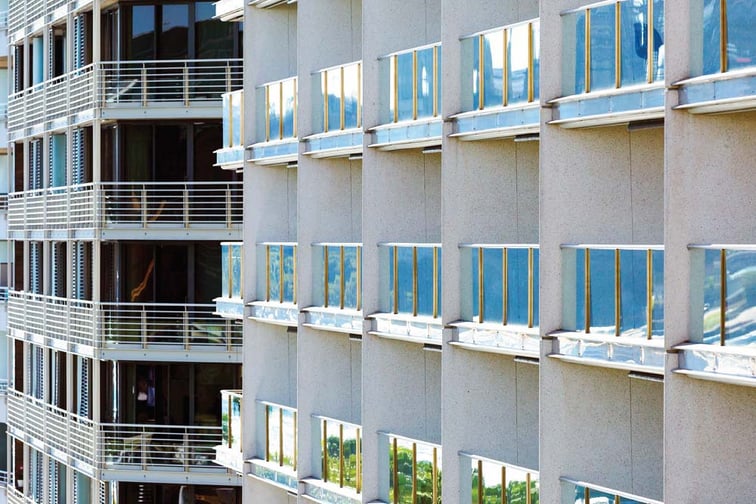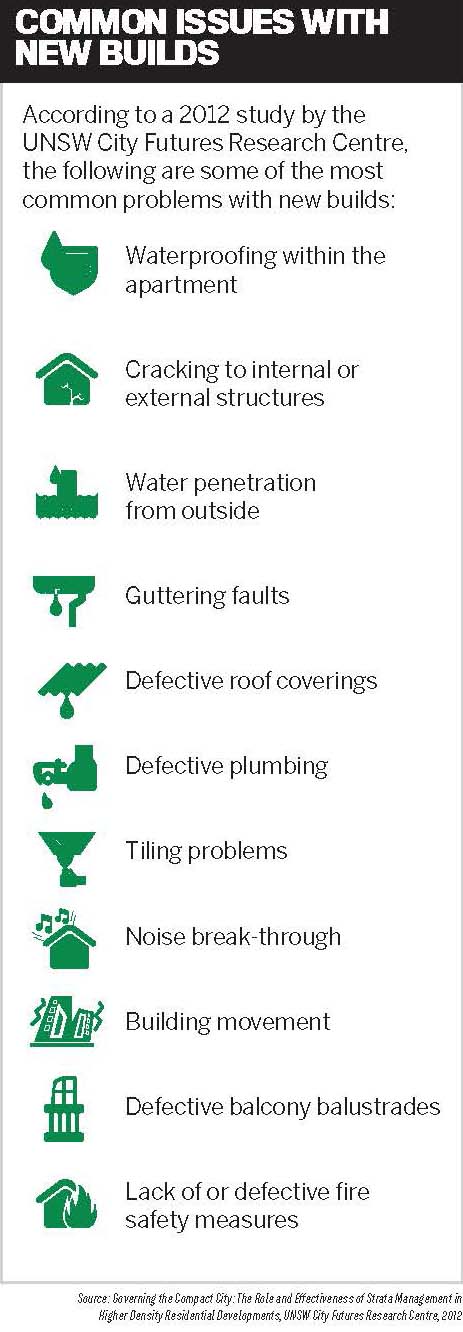

Given the increasing expansion of Australia’s rental market, the strata community is seeing a need for diverse thinking and increased support services. With research suggesting that an increasing number of Australians will rent, possibly for their entire lives, it’s clear that changes need to occur within the insurance space to help accommodate this trend. Anne-Maree Paull, chief customer officer at CHU Underwriting Agencies, believes there is great opportunity for the broking and insurance community to respond to the different ownership, occu-pancy, cultural and demographic needs of people living in strata properties.
“The shift to brokers providing strata insurance is going to continue to accelerate,” Paull says. “Strata schemes and their insurance needs are becoming more complex, and strata owners’ requests for multiple strata insurance quotes are increasing. It’s an ideal avenue for brokers to help their clients.”
While Paull concedes that strata insurance is lagging behind a number of other general insurance lines, she’s confident that this will soon change, due to both consumer demand and technological innovation.
“The core strata insurance product has become increasingly complicated and rigid over the years,” she says, adding that this type of product will come under increasing scrutiny as educated consumers seek to pay for only what they need.
“It’s something we’re looking at very intently for our plans over the next three to five years,” Paull says. “With the rollout of CHU StrataTech to intermediaries and an internal digital transformation plan for CHU, we’re positioning ourselves to address the change.”
Paull points to ‘concierge’ apps and building portals as examples of digitalisation within the field. Designed to benefit strata owner-occupiers, landlords and tenants, functionality ranges from simple push notifications about meetings, events, maintenance works, lift outages and parcel delivery through to logging maintenance issues and paying strata levies. Apps can also offer products and services such as personal insurance quotes, cleaning, tradesmen, dog walking, power connection and removalists.
“The advantage this kind of technology offers is obvious,” Paull says. “We’ll see simple inquiries handled by the user, while at the next level, it can also provide integration options for brokers to connect their systems directly to ours to provide seamless transacting. Digital platforms are just the begin-ning, too. AI-powered chatbots are already on some insurance websites and will only increase in sophistication.”
It’s a change Paull has seen with CHU’s own platform. Launched in 2017, the StrataTech platform enabled straight-through processing 24/7 and a flexible strata insurance product via Flex Insurance, a fully digital underwriting agency.
“Strata schemes and their insurance needs are becoming more complex, and strata owners’ requests for multiple strata insurance quotes are increasing. It’s an ideal avenue for brokers to help their clients” Anne-Maree Paull, CHU Underwriting Agencies
“This met the demand for tailored, more flexible insurance policies and the request from brokers to manage the full policy life cycle online,” Paull says. “In the last 12 months, over 10% of quotes were obtained out of business hours by brokers – it’s a number that’s only going to go up, too.”
Restoring strata confidence
The next few years won’t be completely smooth sailing, though. Paull acknowledges that there is work to be done to rebuild confidence in strata in general, particularly in light of the high-profile issues that have plagued the industry in recent years.
“Defects in any building are common,” she explains. “But recently we’ve seen more significant issues with new apartment developments in Australia – not just with cladding, but major construction defects like in Opal Tower and Mascot Tower. Consumer confidence in strata building has taken a hit.”
There are signs of improvement, though. Paull points to the Building Ministers’ Forum (BMF), which oversees policy and regulatory issues affecting Australia’s building and construction industries. In mid-2017, the BMF requested an assessment of the effectiveness of compliance and enforcement systems for the building and construction industry across Australia. The result was the release of the Shergold Weir Report in 2018.
“The report focused on the failings in the implementation of the National Construction Code and addresses compliance and enforcement systems for building and construction standards,” Paull says. “It concluded that the increasing number of issues has diminished public confidence in the industry to deliver compliant and safe buildings, and outlined 24 recommendations to be implemented over the following three years to lift the standards of residential construction.”
Specifically, the report touched on:
Paull agrees that these are all key elements that need to be addressed in order to assuage public concerns and help restore the public’s faith in the industry.
 “Brokers will have a key role to play in working with clients, insurers and legislators alike to fi nd insurance solutions for buildings with defects” Anne-Maree Paull, CHU Underwriting Agencies
“Brokers will have a key role to play in working with clients, insurers and legislators alike to fi nd insurance solutions for buildings with defects” Anne-Maree Paull, CHU Underwriting Agencies
“Restoring confidence in strata – particularly new builds – will take some time,” she says. “Brokers will have a key role to play in working with clients, insurers and legislators alike to fi nd insurance solutions for buildings with defects.”
The new Australian Dream?
Concerns around strata construction aside, there’s no question that the rental market is growing and diversifying in Australia. In 2018, an analysis conducted by the UNSW City Futures Research Centre found that more than 2.2m people (9% of the entire population of Australia) live in apartments, and the majority of apartments in Australia are owned under strata title.
Of those apartment residents, 65% are under the age of 39, almost half are renters, and more than half were born overseas (predominantly in India and China). Thirty five per cent of strata dwellers are single, 24% are couples, 13% are couples with children, 9% are groups of flatmates, and 6% are single parents.
Overseas, the ‘build to rent’ model is becoming increasingly popular – developers in expensive cities are building apartment blocks intended solely as rentals. “The concept’s really only just starting to take off over here,” Paull says. “But given the growth of the rental market and the shrinking space available, developers are certainly considering the idea. Both the New South Wales and Victorian governments are now looking at ways to encourage developers to invest in apartment blocks that would be entirely available for rent.”
Irrespective of future changes to the market, Paull is confident that CHU will be able to adapt. Brokers remain a central focus for the business, and CHU is contin-ually rolling out new updates to better suit their needs.
“We’re continually evolving the StrataTech platform,” Paull says. “We’ve also introduced the policy management system, which allows brokers to log in and simply quote or, if they choose to, manage the full policy life cycle themselves. Of course, brokers can also continue to deal with us through traditional channels, too – it’s about providing them with options.”
This article is intended for insurance intermediaries only. CHU Underwriting Agencies Pty Ltd (ABN 18 001 580 070, AFSL 243261) acts under a binding authority as agent of the insurer, QBE Insurance (Australia) Limited (ABN 78 003 191 035, AFSL 239545). Your client should consider the Product Disclosure Statement available at www.chu.com.au and whether or not the product is appropriate for your client in deciding whether to acquire, or to continue to hold, the product

